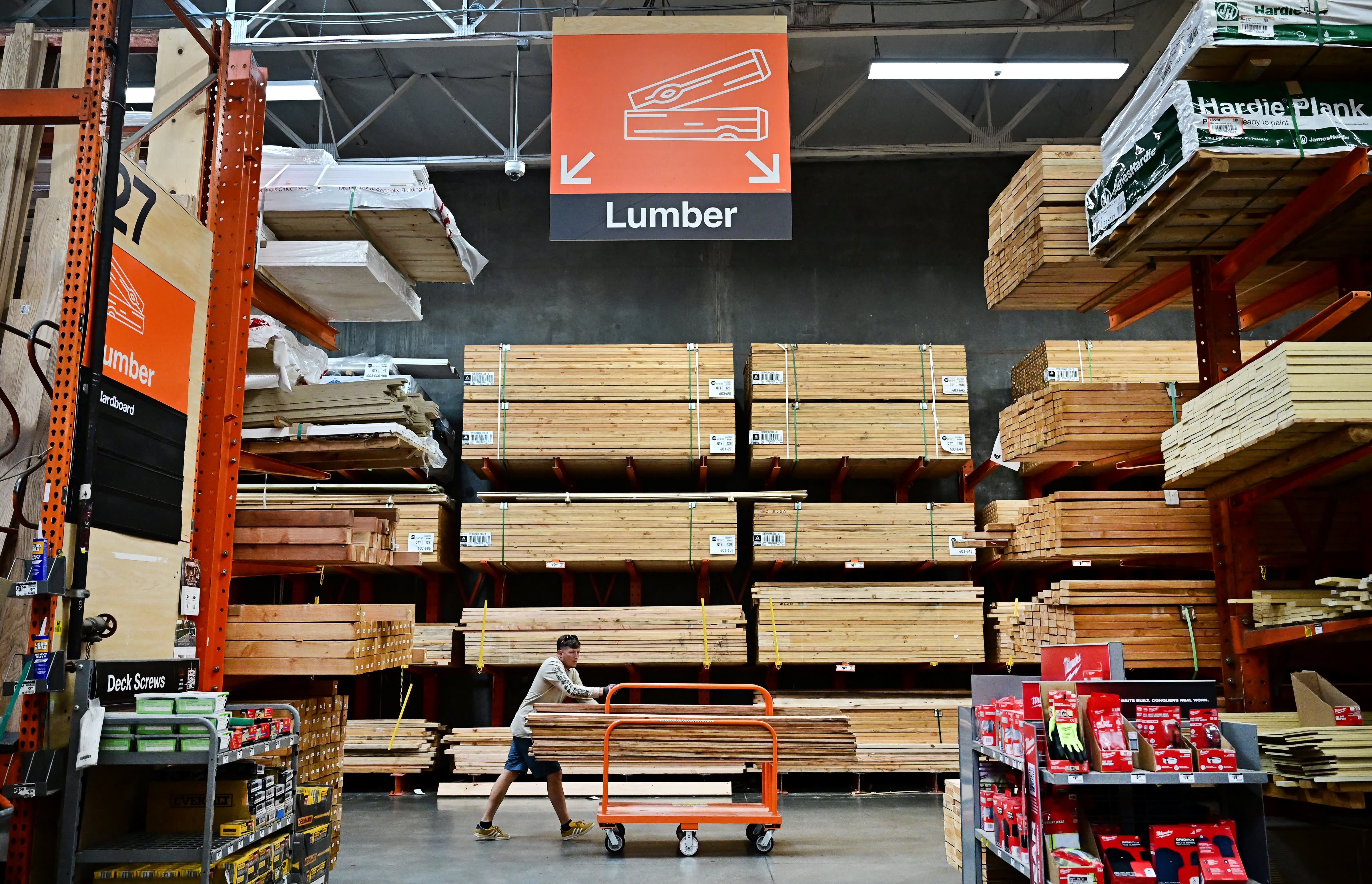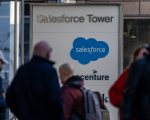
Home Depot shares soared Tuesday as investors saw past quarterly disappointments and looked forward to a better back half of the year. Revenue in the firm’s fiscal 2025 second quarter rose 4.9% year over year to $45.28 billion, missing expectations of $45.36 billion, according to estimates compiled by LSEG. Adjusted earnings per share (EPS) in the three months ended Aug. 3, were flat at $4.68 and were short of the consensus of $4.71, LSEG data showed. HD YTD mountain Home Depot YTD Despite being the first time Home Depot missed on both metrics since May 2014, the stock reversed into positive territory shortly after the release as investors dug deeper into the results. Shares really got going as the post-earnings conference call got underway, and management made it quite clear that, barring any unforeseen shocks to the economic environment, the strong momentum seen throughout the quarter was set to continue. Management reaffirmed full-year guidance. The Club stock, which is one of the Dow 30 names, jumped more than 3% on the session and extended its August rally to a gain of roughly 11%. Bottom line The results may not have lived up to the expectations of so-called sell-side analysts who work at research firms and big banks, selling research and compiling the estimates that make up the consensus used by Wall Street. But they appear to be enough for the buy-side, those who make the actual investments, like the Club. We think the stock move is appropriate because Home Depot is in a strong position once the Federal Reserve starts cutting interest rates — at least 50 basis points, or half of a percentage point, of reductions are expected before year end. Not only will lower rates help the overall economy, but they could help finally unlock the housing formation, which has been stalled due to elevated mortgage rates, that Home Depot’s business relies on. Same-store sales, or comps as they’re called in the retail industry, advanced 1% in the quarter, but fell short of expectations for a 1.2% increase, according to FactSet. That result, however, was much better than the 3.3% decline seen in fiscal Q1 and marked the second positive reading in the past 11 quarters. In an interview with CNBC shortly after the release, CFO Richard McPhail said there is still a “deferral mindset” among homeowners, and it has been that way for about two years. However, he added that the company “absolutely saw momentum continue to build in … core categories throughout the quarter.” Same-store sales increased 0.3% in May, 0.5% in June, and 3.3% in July. Twelve of the company’s 16 product categories experienced positive comps in the quarter, the strongest and broadest performance in over two years. Part of the improvement can be attributed to a favorable change in the weather starting in July. Moreover, on the earnings call, the team said that the strength seen through the second quarter has continued into the first two weeks of the current third quarter. In the U.S., same-store sales outpaced expectations. Other positives, both customer transactions and the average ticket size increased versus the year-ago period, with McPhail also noting to CNBC that big-ticket transactions, those over $1,000, were up 2.6% versus the year-ago period. Though investors are no doubt factoring in rate expectations as they consider Tuesday’s report and what it means for the path ahead, McPhail told CNBC that Home Depot does not “embed any point of view on the rate environment changing, nor on the demand for large projects changing”. As a result, there may well be some upside to this guidance should rates indeed come down and spur demand in the housing market — be it from more turnover, increased renovation activity, or a change in that “deferral mindset” he called out. A decline in longer-term rates would have more impact on mortgages, while a decline in shorter-term rates would help people looking to tap a home equity line of credit, which can be a consideration for funding larger home projects like remodeling and renovations. On the call, the team also cited the recent passing and signing of the Republican “one big beautiful bill” of tax and spending priorities. They noted that Home Depot should benefit not only from more discretionary money in consumers’ pockets but also from factors such as bonus depreciation and the full expensing of research and development costs. As a result, we’re reiterating our 1 rating and $440 price target. Tuesday’s stock move has been a clear indicator that if you wait to see the actual decline in rates, you will be too late. Commentary Though management may not be including any improvement in rates in the guidance calculation, the team was willing to discuss the dynamics on the call. They said that relief in mortgage rates should be beneficial to the company, especially should it catalyze inventory turnover and new home starts. That said, the management offered two caveats: (1) they can’t say exactly what rate level prompts that, and (2) most of the homeowner hesitancy, “by a wide margin,” is due to general economic uncertainty, meaning factors beyond rates, such as labor availability, and/or tariff dynamics. Speaking of tariffs, Billy Bastek, executive vice president of merchandising, said that over 50% of Home Depot products are sourced domestically and won’t be subject to tariffs. “It won’t be broad-based,” he added. Why we own it Why we own it: Home Depot is a best-in-class operator with about 55% of sales coming from serving professionals and 45% from do-it-yourself homeowners. While the operating environment hasn’t been the best over the past couple of years, management has been making smart moves to strengthen the business. As a result, we think it’s ready to run once interest rates start to come down and translate into lower mortgage rates. That, in turn, should increase activity in the housing market — a dynamic we expect to materialize as we enter 2026. Competitors : Lowe’s Portfolio weighting: 3.95% Most recent buy: March 28, 2025 Initiated : Sept. 9, 2024 Home Depot has also been devoting major resources to cement its dominance in supplying builders and contractors. Last year, Home Depot acquired SRS Distribution in an $18.25 billion deal. In June, the home improvement giant made a $4.3 billion bid to acquire GMS . On the call, Home Depot CEO Ted Decker said, “Over the past year, SRS has exceeded our expectations, driving market-leading growth, accelerating our organic ecosystem efforts, and driving revenue synergies.” Additionally, Decker said, “We are excited about the pending acquisition of GMS, a leading distributor of specialty building products, including drywall, ceilings, and steel framing related to remodeling and construction projects. This acquisition will add a highly complementary adjacent vertical to SRS’ business with differentiated capabilities, product categories, and customer relationships.” Guidance In reaffirming full-year guidance, despite the fiscal Q2 headline misses, the team is looking for total sales growth of 2.8%, same-store sales growth of 1%, and adjusted EPS of roughly $14.94. Those targets are marginally below what the Street was looking for — but with the focus clearly on the upward momentum, they were all close enough. (Jim Cramer’s Charitable Trust is long HD. See here for a full list of the stocks.) As a subscriber to the CNBC Investing Club with Jim Cramer, you will receive a trade alert before Jim makes a trade. Jim waits 45 minutes after sending a trade alert before buying or selling a stock in his charitable trust’s portfolio. If Jim has talked about a stock on CNBC TV, he waits 72 hours after issuing the trade alert before executing the trade. THE ABOVE INVESTING CLUB INFORMATION IS SUBJECT TO OUR TERMS AND CONDITIONS AND PRIVACY POLICY , TOGETHER WITH OUR DISCLAIMER . NO FIDUCIARY OBLIGATION OR DUTY EXISTS, OR IS CREATED, BY VIRTUE OF YOUR RECEIPT OF ANY INFORMATION PROVIDED IN CONNECTION WITH THE INVESTING CLUB. NO SPECIFIC OUTCOME OR PROFIT IS GUARANTEED.








